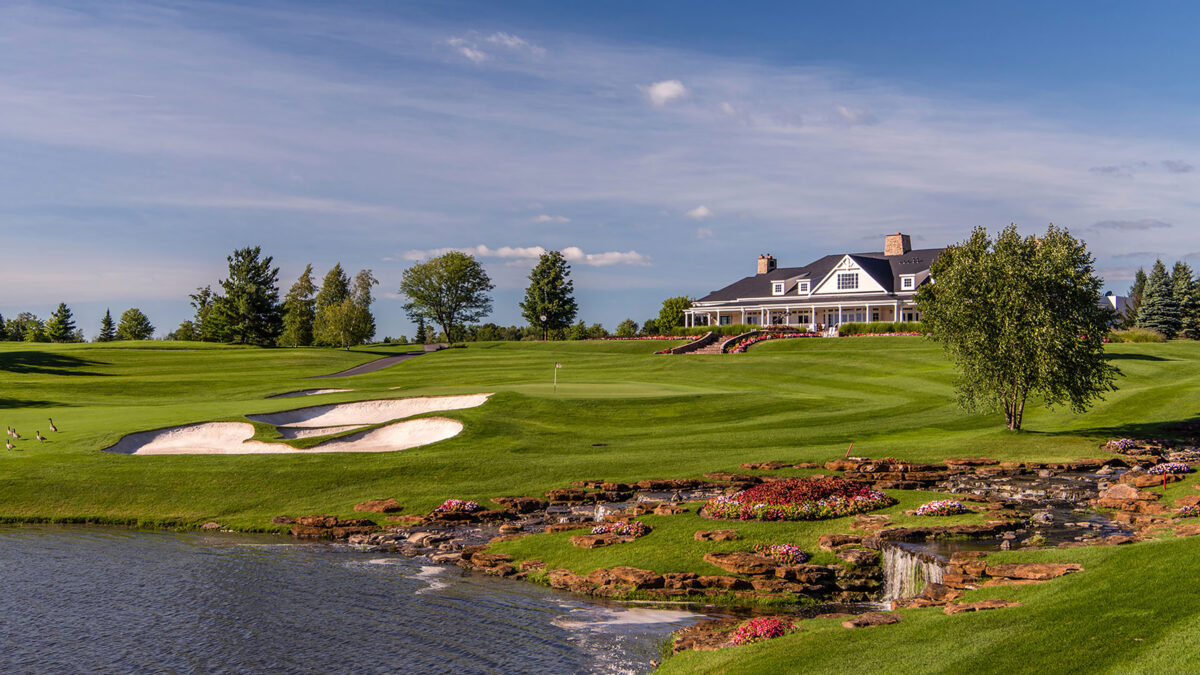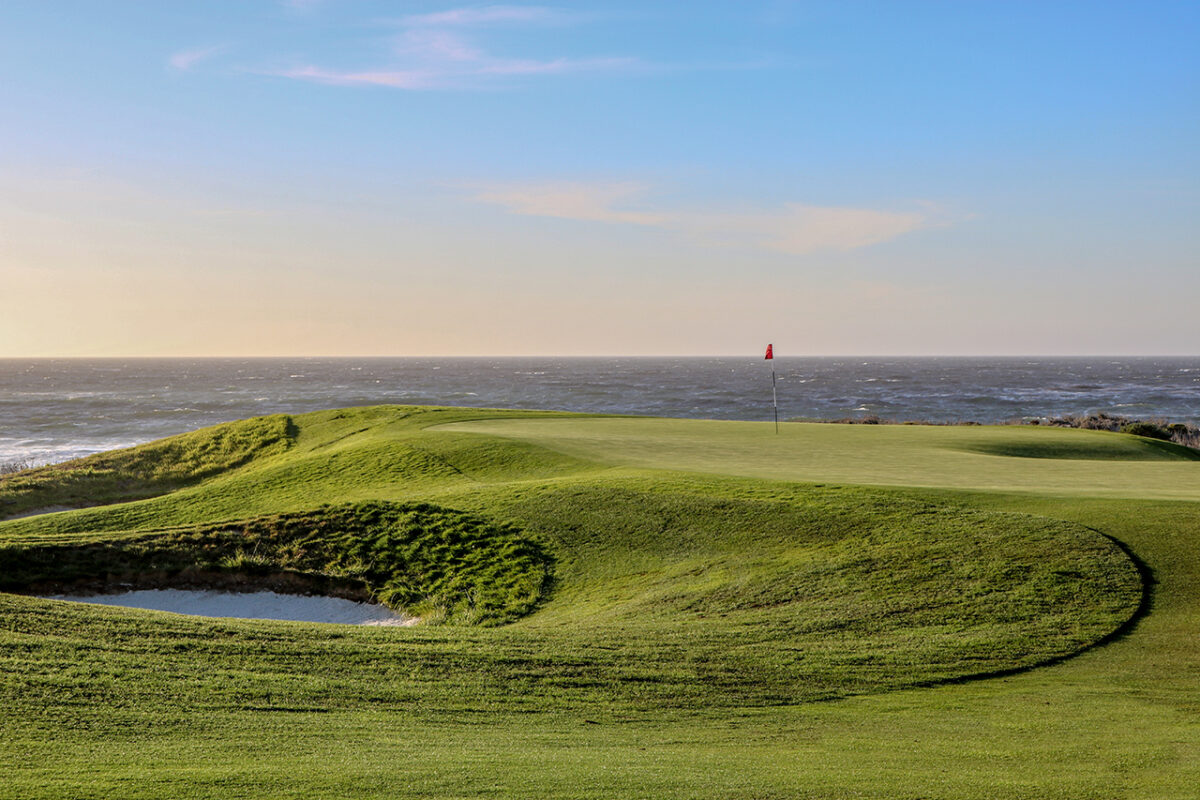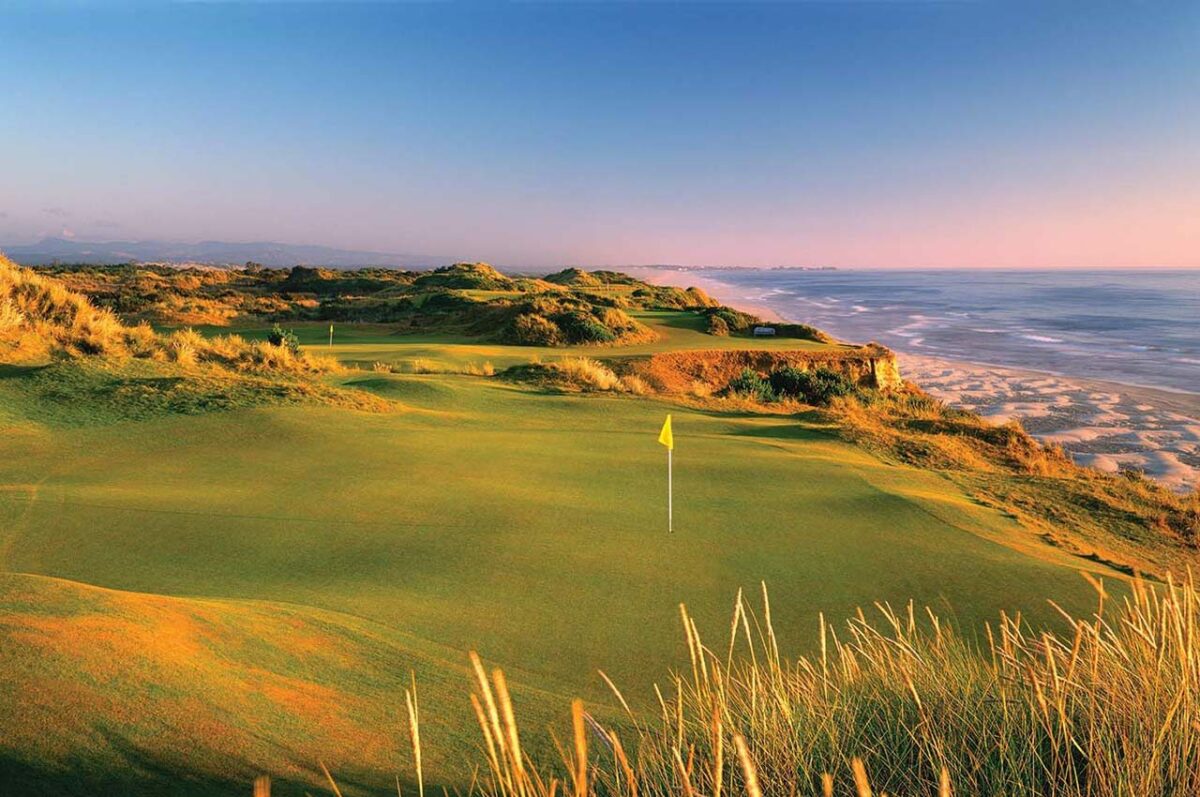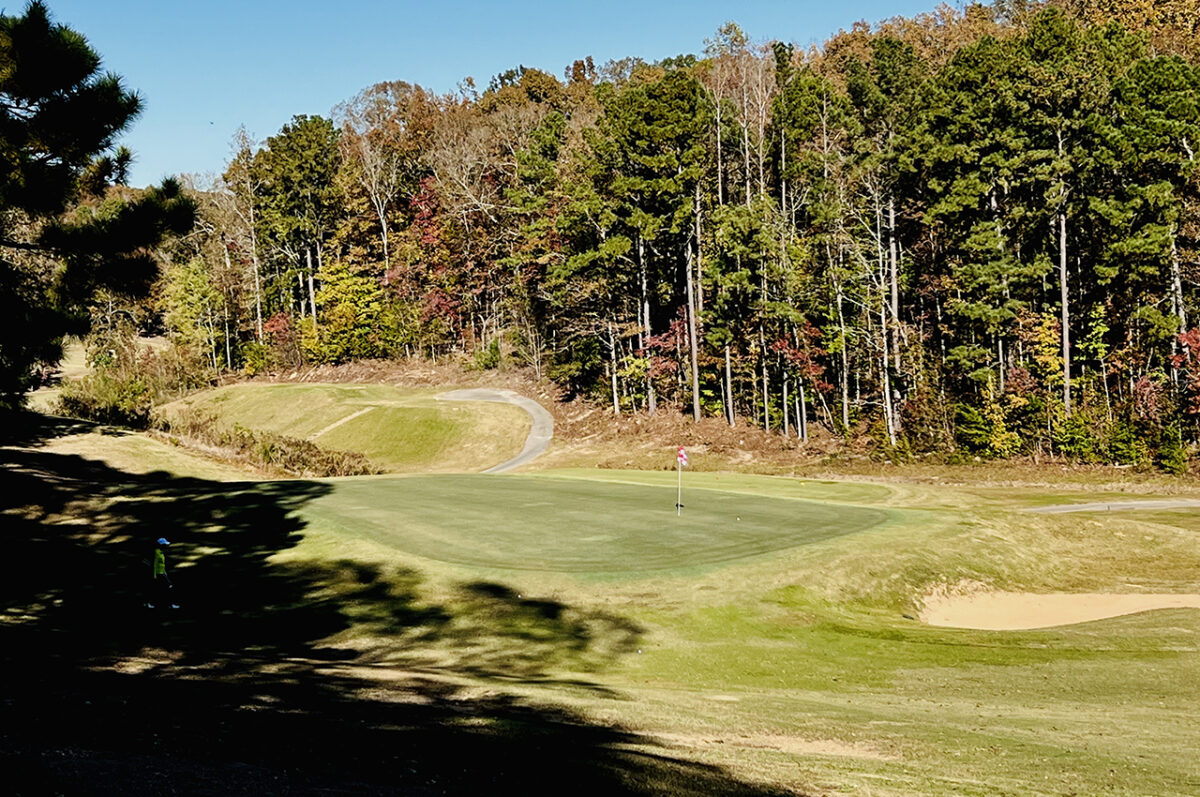VERONA, N.Y. – Matt Falvo has a natural way of sauntering around a golf course – armed with an impressive driver, a confident stride and a coy smile. When he’s walking one of the three championship courses at Turning Stone, a casino property in Central New York just east of Syracuse, he’s even more at ease. Now the director of golf courses and grounds, Falvo has worked for nearly a quarter-century at the property and he knows every in and out of this pastoral piece of paradise.
Falvo points to his house while playing the picturesque but inviting Shenendoah course, the one staffers often recommend as the resort’s best starting point. Also, his son is a 6-foot-4 defensive end for the local high school football team, which plays its games at a campus visible from the Turning Stone grounds.
And Falvo can share funny stories about when the complex – part of a massive and expanding casino property owned and operated by the Oneida Indian Nation of New York – was host to the PGA Tour’s Turning Stone Resort Championship from 2007 to 2010. For example, he won’t go into detail about John Daly’s brief appearance in the 2008 event, but when asked if the two-time major winner spent too much time in the casino before his opening round, Falvo stops and smiles.

“All I’ll say is this,” Falvo quietly says with a smirk. “He only played seven holes. And it took a while to figure out that he was gone when he left.”
But for all his knowledge about the casino property, one that’s seemingly adding new pieces every summer, Falvo has no desire to trumpet how demanding the resort’s most difficult track is. In fact, he insists it’s not his place to do so. But he does know that when many players come off the Robert Trent Jones Jr.-designed Kaluhyat, they liken it to another famous New York State track nearly 400 miles away.
“It’s not my job to say so, but people love to tell me that this course is harder than Bethpage Black,” Falvo said in his relaxed style. “That’s them. Not me. But I hear it all the time.”
In fact, Kaluhyat’s slope is 145, which makes it one of the state’s toughest courses, although not the 155 of Bethpage Black. But there’s still room for debate about whether it’s as difficult as the municipal course hosting the 2025 Ryder Cup.
https://www.instagram.com/p/C4v96_jOt1M/
There is no sign warning players how difficult the challenge at Kaluhyat is, but there probably should be. And starters, staffers and pro shop attendants are all quick to check if you’re prepared for the course’s wrath before starting a round. I had three different people ask me if I was prepared to be bludgeoned.
And while it’s certain to damage your handicap, Kaluhyat offers up some incredible views and truly breathtaking holes. The tee box on the second hole is perched high and its fairway is tree-lined and tight, like so many during the round. Precision is truly in demand on this course, but those who find the short stuff can score.
For example, the short par-4 fourth hole teases players into bombing down the left side of the fairway over a small bunker, leaving an easy wedge approach. But even the slightest pull will find not just deep grass, but an impossible line of trees from which to dig your ball. And those who catch a bad break and roll through the fairway can find an equally impossible shot. The safe play is a mid-iron to the right side of the fairway, leaving a good angle and another mid-iron in.
Easy to say, difficult to mentally put into action.
And after you get a little weary from the grind that Kaluhyat delivers, the par-5 No. 13 offers a Bay Hill-like risk-reward, with a lake that allows you to bite off huge chunks if you’ve got the guts and the game.

I played with my dad, who was clearly beaten and bruised by the experience, to the point where his normally reserved personality suffered a severe meltdown in a bunker on the incredible 16th hole, a par-4 with a blind tee shot that demands both distance and accuracy. To set up a second shot over a deep ravine, you need to place your tee shot deep and straight, as the fairway narrows approaching the dropoff. Miss even a little with your big stick and the potential to put up a huge number becomes likely.
This exact scenario played out with my father, who pulled his drive a little left and into the thick stuff, then had to lay up to the edge of the ravine. He missed left with his approach and found a massive bunker, and when he caught the top of the lip with his wedge and the ball rolled back to his feet, the nearby maintenance crew heard words I’d never before heard him utter.
Kaluhyat can do that to you.
But the real surprise for those who haven’t done their research is that Kaluhyat is not the course on which the Tour made its presence felt. That distinction lies with Atunyote, a Tom Fazio-designed parkland-style course with wide, gorgeous fairways and a sense that you’ve entered a private world, complete with an exclusive entryway that has almost no signage and a massive gate. To enter you approach a call box, like something from an ’80s CIA movie, and get buzzed through to the pro shop.
But once inside Atunyote, which means “eagle” in Oneida, you can see why this was a great venue for the Tour. Originally, Turning Stone filled in as the host site for the 2006 B.C. Open, after En-Joie near Binghamton – about 90 minutes away – was flooded just months before play was to begin. The site was so satisfactory that the resort was given a full-fledged event for the next few years and Atunyote, which was the site of Dustin Johnson’s first PGA Tour victory in 2008, forever became a piece of professional golf lore.
Turning Stone eventually lost the tournament, but to be fair, the rural setting makes it difficult to attract what the Tour now covets – massive crowds and loads of corporate involvement. The move away had nothing to do with the course, which ranks among the top 10 on Golfweek’s Best top casino tracks.

While the course is open and inviting, it’s anything but easy, as is best evidenced by the par-5 12th hole that forces those with “atunyote” dreams to flirt with a pond that surrounds the right portion of the green. Also, the 14th hole follows a crooked creek that was manipulated by Fazio’s design team after a breathtaking waterfall was installed behind the green.
There is plenty to love about Atunyote, as the experience feels befitting of its place in Tour history (Matt Kuchar also won here), and Fazio’s elaborate touches help make the experience truly world-class.
While Kaluhyat and Atunyote get most of the attention, the popular and playable Shenendoah also offers plenty of bite. The host site for the 2006 PGA National Club Professional Championship, Shenendoah is a fun ride, some parkland-style holes, some with a links feel. As previously mentioned, this a perfect indoctrination into the Turning Stone family, and the closing hole, a long par 5, is a perfect way to prepare for what Kaluhyat and Atunyote have in store.
Of course, Turning Stone is a full-service resort, with impressive accommodations, gaming and the exquisite TS Steakhouse, which sits atop a 21-story tower with sweeping views that stretch as far as Oneida Lake. And there are plans for more additions in the near future, including a $400-million expansion that will add to the resort’s skyline with a new hotel and seafood restaurant that’s expected to rival the steakhouse.
And if the three big courses aren’t enough, Sandstone Hollow is a Rick Smith-designed short course that offers plenty of fun. Oh, and here’s a pro tip: The nine-hole Pleasant Knolls was originally purchased as a nearby addition to be folded into one of the current courses, but instead was maintained and improved upon. The course is a great romp and offers the cheapest beer prices on the complex.
Speaking of prices, how does the entire experience match up with other great golf destinations? As of this story’s publication, you could play rounds at all three of the championship courses, and both of the shorter courses, for about the same price as one round at TPC Sawgrass.
Well, that is if you don’t spend too many hours – like John Daly may or may not have done – at the resort’s many blackjack tables.

















